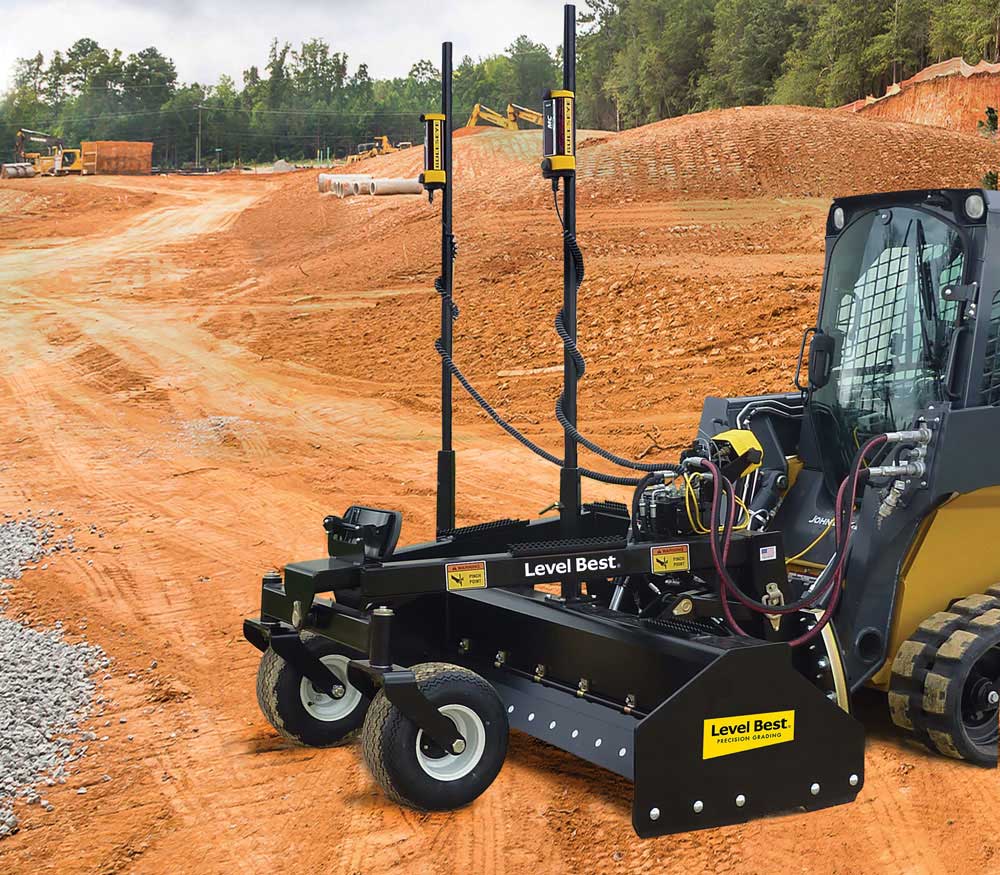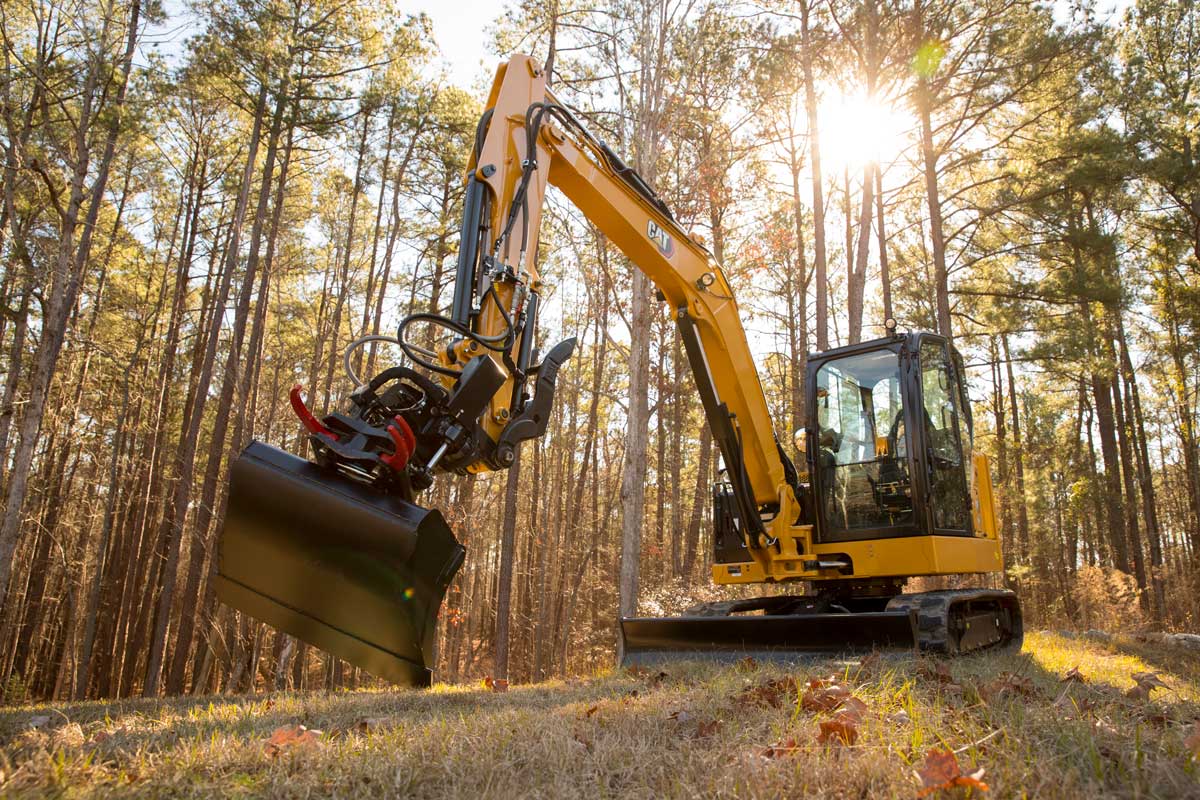Level Up: Let’s Boost Our Collective Knowledge on Grade Control Systems for Attachments

The terms “grade control” and “machine control” are often used interchangeably. We will use the term grade control for the sake of simplicity. The terms mean the same thing — an earthmoving machine is being controlled by technology, not the operator. In grade control, electronic technology drives the machine’s hydraulic system to adjust the blade to produce a desired grade more quickly and accurately than an operator can do by feel or by eye. Grade control technologies vary. They include rotating lasers, sonic tech, satellite GPS or a robotic total station. Grade control technologies offer dramatic increases in efficiency and greater accuracy compared to an operator alone. They are also becoming much easier to use. Even novice operators with minimal training can produce excellent results with grade control. However, like with any tool in the hands of a skilled craftsman, a skilled operator will maximize the efficiencies of grade control.
What Buying Options Are There?
Grade control is divided into two groupings: 2D (two-dimensional) and 3D (three-dimensional). 2D grading is essentially a flat surface. The plane of the flat surface can be perfectly level or tipped in either one or two of its side axis to create a slope for water drainage. While the plane can be sloped in either one or two axis, the table’s “top” will always remain flat. 2D machine control is generally simpler to learn and use and less expensive than 3D.
The 2D grade is made by moving the blade up and down to achieve a simple grade elevation and uses lasers or sonic technology. Rotating lasers are set on a tripod and send the laser beam in a single plane. Laser receivers on the grade control system find that beam of light and adjust the machine up or down to meet grade. Laser systems are ideal for large, flat areas.
A rotating laser can be used in three modes: flat, single slope and dual slope. Flat is dead level like a concrete floor. Single slope tilts the surface along one side (the X-axis) so that water drains to one edge. Dual slope tilts both the X-axis and Y-axis so that water would drain to one corner. However it slopes, the surface remains flat.
Sonic trackers use sound waves to follow the edge of a curb or a string line and are commonly used in the paving industry. By following that edge, the sonic tracker tells the grade control system to raise or lower the machine to achieve the desired grade.
3D grading builds on the basics of 2D grade elevation, then adds cross-slope calculations to achieve the third dimension. Ten years ago, 3D grading was reserved for large production machines like dozers and motor graders. Large production machines with 3D grade control were extremely efficient in establishing grade on a jobsite, moving thousands of yards of material to a very tight tolerance. The success of 3D grading on those large production machines has increased the popularity of 3D grading. Today, the benefits are filtering down to compact machines like compact track loaders and skid steers. 3D grading is best represented by envisioning a golf course, with both flat and rolling terrain. 3D grade control uses forms of GPS satellite technology or a robotic total station to achieve the grade. GPS controls require significant overhead visibility, so GPS cannot be used inside buildings or where trees or buildings obscure line of sight skyward. Also, the accuracy of grade elevation may not be tight enough for some types of work, like fine grading where small fractions of an inch are common.
Robotic total stations require a direct line of sight between the base robot and the machine it controls. A total station works well inside of a building. Information comes from a pre-programmed site plan that is transmitted back and forth between the base and the prism on the machine. Line of sight faces the challenges of operating near columns, trees and other equipment moving on the jobsite. If the line of sight is broken between the total station and the grading machine, the system does not function. While robotic total stations are extremely accurate, that accuracy comes with a higher price tag.
Cost and Operation Tips
Grade control is a significant investment. Initial decisions often have repercussions on future decisions. It is always wise to invest in online research to learn some of the basics of grade control. Knowing some of the basic terms and how different systems function will inform you well enough to ask good questions of your dealer. This can help prevent over-spending for things your business doesn’t need. Follow this checklist:
- Do your research. Educate yourself on the basics and the terminology of grade control. Watch videos to see grade control technology in action. Read internet forums to learn from the experience of others. Speak to people you know who are already using grade control technology.
- Look to the future. Aim for maximum flexibility of grade control platforms to allow for future needs. On the electronics side, what grade control technology will grow with the needs of your business? On the machinery side, which machines offer a platform flexible enough to allow both 2D and 3D grading? Wise decisions up front allow for simple upgrades in grade control systems as they are introduced, which can save money. Where is your business heading? Some grade control attachments and grade control equipment are easier to upgrade. Plan early for the future with forward-looking platforms. A good grade control systems dealer asks about your future needs. Some grade control technology allows for the upgrade to 3D grading with the same basic control platform. Other grade control technology requires you to stay with 2D laser technology.
- Does your fleet include multiple equipment brands? A grade control attachment may work well on one brand of equipment but not another. Make a choice that provides the most flexibility in grade control equipment and the brand of machine running it.
- Partner with a grade control dealer. Are you currently committed to Trimble, Topcon or Leica grade control? Partner with a grade control dealer who educates you and provides service after the sale.
Who’s Renting or Buying These Attachments?
Grade control for attachments grew out of the concrete industry. The accuracy and efficiency of fine grade control quickly demonstrated itself as a winner because of its ability to lower material overages while increasing the quality of the finished surface. Contractors recognized greater flatness and saw fewer slab cracks. The cost savings of labor and material overages and slab quality associated with grade control finish grading were quickly noticed. Soon, laser grading was being written into the bid specs for “big box” stores. Since then, grade control has established itself firmly as a necessary purchase for excavation contractors, athletic field construction and maintenance, pole building contractors, equine arena specialists, golf course construction and renovation and the hardscaping industry.
If you are unsure whether a grade control purchase can be justified, rental may be a good option, depending on bid specs. Rental provides the benefits of grade control efficiency and accuracy without the commitment of ownership. By renting, contractors often quickly learn firsthand that the accuracy, versatility and convenience of a grade control attachment warrants a purchase.

How Do You Install and Set Them Up?
Equipment manufacturers are building in provisions for installing grade control systems after the sale. In fact, basic grade control equipment is quickly becoming a DIY project. Once grade control systems are installed, daily setup usually takes five to 10 minutes.
How does it work? A grading attachment hooks up like any other hydraulically powered attachment. Fasten the quick-attach of the loader to the attachment and plug in the hoses to the standard-flow hydraulic ports. Next steps of installing the control technology vary according to the type and brand of controls. Generally, it is simply attaching receivers and control boxes onto the attachment and connecting wires linking the components together so that everything communicates within the grade control system.
“Benching” the grade for grade control equipment is the next step. This step ensures the jobsite’s grade spec matches settings on the grade control attachment. Once benched, it is time to put the machine in the ground for a few feet to check the results with a grade checker. Adjust the grade control equipment as needed. After the machine is set for the right grade, it is simply a matter of driving the machine around on the jobsite. The grade control technology does the work for the operator.
What Type of Training Is Necessary?
Training on grade control technology is important. The degree of training depends on how sophisticated the technology is. The more sophisticated the system, the more training required. 3D grade control is more advanced than 2D grade control. Choosing the right dealer for grade control technology is important because the technology dealer provides the training. There is a bit of a learning curve, but users often wonder why they didn’t make the leap to grade control technology years ago.
Learn more about grade control systems here.
Jack Herr is the vice president of sales at Level-Best Precision Grading Equipment.




